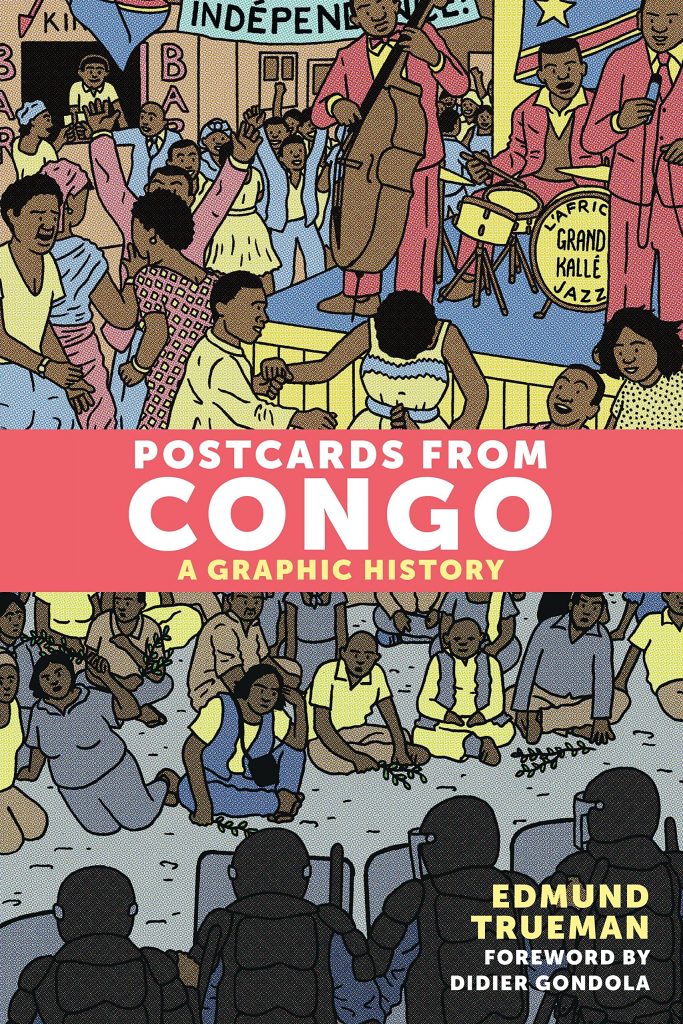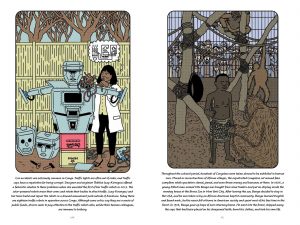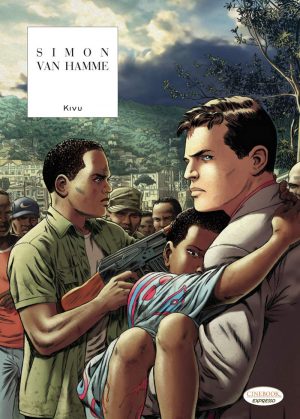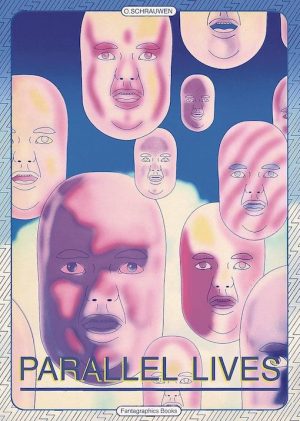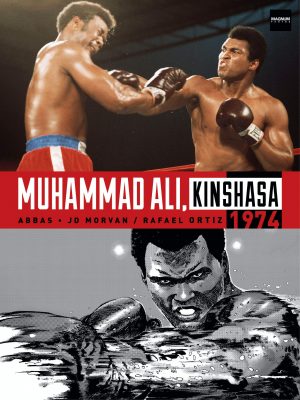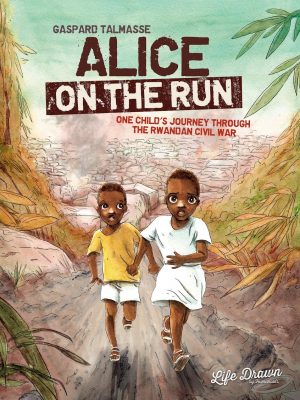Review by Ian Keogh
Postcards From Congo has a remarkable genesis. Edmund Trueman felt he was ignorant about African history, so began to research what’s a vast topic, coming back time and again to the now separated country of Congo. He planned to visit, but was prevented by the covid pandemic, so instead began work on this project, detailing the history of the country, noting the most famous graphic novel featuring Congo is the now lamentable Tintin in the Congo.
Trueman notes in his introduction that his historical perspective focuses only on what’s now known as the Democratic Republic of Congo, formerly Zaire, with Kinshasa as the capital city. The history of the smaller Republic of Congo isn’t covered, while a selection of maps at the start supply primary information. Trueman’s chosen form is reflected in the title, producing a history via single page illustrations and blocks of text. The intention is that each page presents a snapshot, applying a progression through the representative illustrations, so blurring the lines between what’s an illustrated book and comics storytelling. The continuity is more apparent once Trueman moves beyond the pre-colonial era.
If people are aware of any Congolese history it’s probably the Belgian occupation by King Leopold II, which strip-mined the country, only ended in 1960 and was shockingly brutal even by the standards of colonialism. So abhorrent in fact, that it led to the first international humanitarian campaign. The death toll numbered several million over the decades even by the most conservative estimates. There are scenes of torture, but Trueman choosing to produce his illustrations very much in Hergé’s style ensures they’re not so gruesome they restrict the audience. One appalling moment of American complicity is supplied on the sample page.
Drawing in Hergé’s style may be an attempt to reclaim it from Tintin in the Congo’s casual racism, but it’s also very adaptable, simple enough to be taken in by the youngest reader, and never sensationalised. Trueman has a tidy line in two-dimensional dioramas, although where the style is weaker is in capturing likenesses of prominent figures. Usefully, Trueman also provides notes on each illustration, explaining source or context.
As much as possible Trueman presents his history from the local viewpoint, although that’s not always possible, not least because many, many tribes with their own histories exist in a massive country, with Congo approximately the same size as most of Western Europe. It’s shown how even long after occupation the festering resentments fanned during the era caused catastrophes decades later as the Rwandan civil war also features. The primary post-independence figure is Joseph Mobutu, who with CIA assistance emerged from chaos to become the long-term ruler. He’s brutal, corrupt and shows no mercy to challengers, but the wider world, especially the USA is happy to prop him up to avoid the spread of Communism. It feeds into a depressing narrative of how little freedom the nation’s had over the past 150 years.
However, Trueman’s history scores by being social and artistic as well as political. Readers are introduced to themes, and artists across a number of forms, and while never downplaying suffering, Trueman also highlights achievement. Unfortunately, though, Congo continues to be a state that curtails personal freedom, corruption remains rife, and there’s a suspicion that each successive ruler continues to settle personal scores in the name of housecleaning.
It’s questionable how many English language readers are searching for a history of Congo, but they’re unlikely to find anything as accessible as this.
